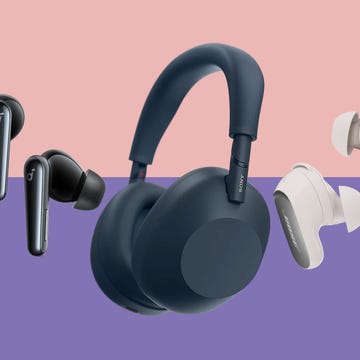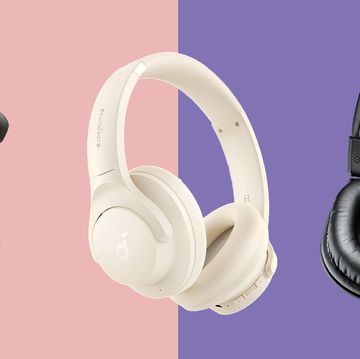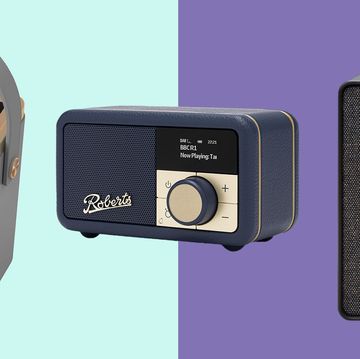It makes sense if your search for the best Bluetooth speaker is focused on slightly larger models. After all, a bigger speaker tends to correlate to a more all-encompassing sound and volume, and that’s essential if you want everybody at your outdoor gathering to hear your playlist. It’s especially important if you’re hosting several guests.
But small speakers can be deceptively capable for their tiny size. I was already impressed by the power of the JBL Go 3 and the JBL Clip 4, which are both compact and versatile, and they’ve now been updated to brand-new versions with enhancements and slightly amended designs.
I’ve had my hands on both the new JBL Go 4 and the JBL Clip 5 for several weeks, comparing them directly to each other to see which of these tiny speakers is the best pick for travel, camping trips, and more intimate and small garden parties.
What to read next
JBL Go 4 vs JBL Clip 5: At a glance
Both models look almost identical to the speakers they replace but have some minor design improvements, new Bluetooth upgrades and capabilities, app support, and increased battery life.
JBL Go 4 vs JBL Clip 5: Connectivity and features
Both the JBL Go 4 and the JBL Clip 5 have Bluetooth 5.3 with LE Audio and Auracast for connecting multiple speakers.
Auracast is a relatively new technology from the latest Bluetooth standards. It holds the potential to beam audio to multiple playback devices at once without them needing to be from the same range.
It’s super easy to use on both these speakers, you just press the Auracast button on the primary speaker, then on the second Auracast-enabled speaker. After that, in-sync audio will play from both. There aren’t too many models with Auracast support yet and this is limited to other speakers from JBL only, but I tested this by connecting both the JBL models to each other and it’s as easy and impressive as it sounds.
Compared to the older JBL Go 4 and Clip 5, they can now connect to the “JBL Portable” app too. Here you can see accurate battery percentages, update the firmware and change the sound profile with some preset options and a custom equaliser.
JBL Go 4 vs JBL Clip 5: Design and durability
Like the models they replace, both these speakers boast a robust IP67 rating for water and dust resistance. They both have designs made of recycled fabric and plastic and are light to hold; they’re designed to be as portable as it gets in the Bluetooth speaker category.
The most evident difference is in the name. The Clip 5 has a carabiner clip built-in, while the Go 4 is slightly more compact and has a braided carrying loop available to attach to a hook or clip. Both options are good, but which appeals the most will depend on what you need the speaker for.
For the Clip, the carabiner clip was redesigned from the old one to this, so it’ll fit in more places, and both models have improved silicone feet, although the Go is made to stay stable in a flat or upright orientation.
If you’re always moving the speaker from place to place and want to position it either way up, the tiny Go will be a good fit. But if you’ve got railings you can attach the Clip to, or think you’d want to clip it onto a backpack, then it’s the obvious pick.
Both speakers have the same selection of physical buttons covering play/pause (a double press skips forward, a triple press goes backwards), volume up and down, as well as power, Auracast and Bluetooth pairing. While there isn’t a battery indicator, there is a small light on both speakers that’ll turn red when it’s time to recharge.
JBL Go 4 vs JBL Clip 5: Sound quality
Technically, the JBL Go 4 has the same speaker output as the JBL Go 3, and I’ll be honest that I can’t hear an enormous difference between the two.
That makes sense, though, given that JBL doesn’t make many specific claims of sound improvements other than that this has “punchier bass” — it’s a small speaker and the sound is great for the size, but even a little increase in size allows for sound improvements, as shown with the Clip 5.
The Clip 5 is a better-sounding speaker than the Go 4, with a greater output and more engaging bass performance. It has enhanced driver power compared to its predecessor, and I can hear some of the minor differences in the low end.
It’s also still a small speaker, but can get a bit louder without too much obvious distortion. If sound quality is a priority, you can spend a little more money to get much better audio from other Bluetooth speakers, but what you’ll miss out on is the portability of these little units.
JBL Go 4 vs JBL Clip 5: Battery life
The Go 4 can last for a maximum of seven hours of playback, depending on the volume level and equaliser setting, while the Clip 5 is capable of slightly more, lasting for up to 12 hours of playtime. On both, I think that’s quite an impressive battery life for smaller speakers, and it’ll be enough for either one to provide the soundtrack to an evening party or some campside drinks.
On both speakers, there’s a “PlaytimeBoost” setting in the app that can increase the battery slightly while raising the volume. Just note, though, that the sound quality is a bit shrill and tinny in this mode – there’s a reason it’s off by default.
If you’re worried about battery life, I’d recommend simply keeping a decent power bank to hand long before I’d suggest ruining the sound quality with the PlaytimeBoost option.
JBL Go 4 vs JBL Clip 5: Which one should you pick?
Compared to the older versions, the updates to both the JBL Go 4 and Clip 5 add up to make them more versatile and useful overall. The most obvious improvements are the app connectivity, Auracast support, and the better battery life on both models.
The other difference not yet mentioned is the price, as the Go 4 costs £44.99 while the Clip 5 costs £59.99. That’s not a substantial difference overall, but it is worth noting if you’re on a budget.
I’d recommend picking either of these over their predecessors. Both are brilliant for different reasons:
- If you know you’d like to use the built-in clip often, want better sound quality and better battery life, pick the JBL Clip 5.
- However, if you’d prefer a more compact and light form factor and aren’t as fussed about the bass capabilities, the JBL Go 4 gets my vote as a super fun compact speaker.
Simon Cocks is Good Housekeeping UK’s Technology Editor, overseeing tech shopping content and strategy for the title. He previously also worked across other titles including Esquire UK, Digital Spy, Men’s Health UK and Women’s Health UK.
Simon specialises in testing the latest smart gadgets, home entertainment gear, headphones, speakers, portable chargers, radios, e-book readers and smartphones. He's reviewed top tech products from brands including Google, Apple, Amazon, JBL and Bose.
A magazine journalism graduate from Kingston University in 2014, Simon also worked on the Discovery and Silkroad inflight magazines. He then gained experience writing about entertainment at SFX and Total Film. He also contributed reviews and interviews to TwitchFilm (later ScreenAnarchy), CultBox and Frame Rated.
He joined Good Housekeeping UK as the Editorial Assistant for Special Projects and was part of Good Housekeeping’s Consumer Affairs Team between 2014 and 2019. In this role, he conducted price comparison research, wrote detailed household and money-saving advice guides and edited thousands of in-depth reviews for the Good Housekeeping Institute.
He has focused on technology and gadgets since 2020, where he started by testing out power banks and instant cameras. He writes reviews, roundups, news articles and deals updates, and also covers top tech deals during sales like Amazon Prime Day, Black Friday and Cyber Monday.
When not testing out the latest gizmos, you’ll find Simon either catching up with the newest releases at his local cinema or out shooting with his beloved compact camera.
You can follow Simon on Instagram, on Bluesky, on LinkedIn and on Threads.



















